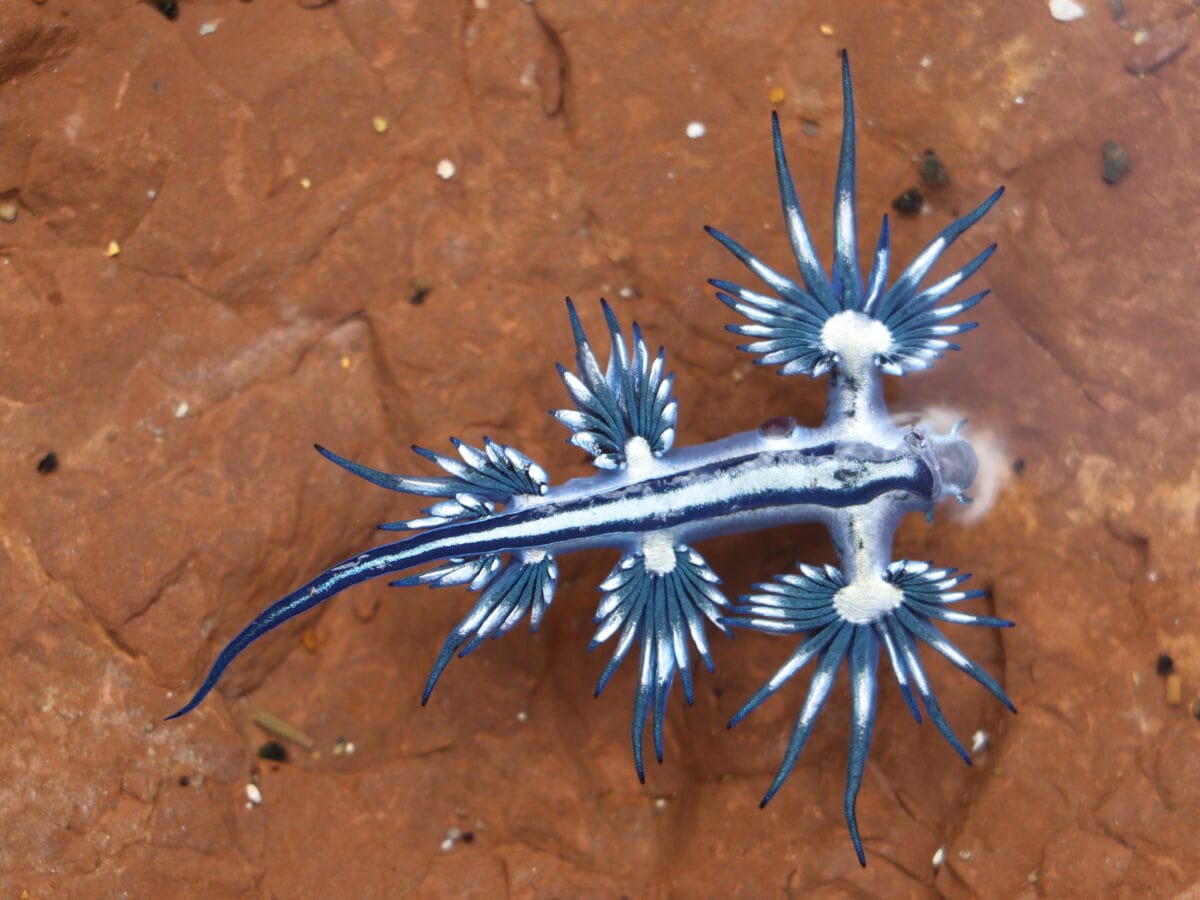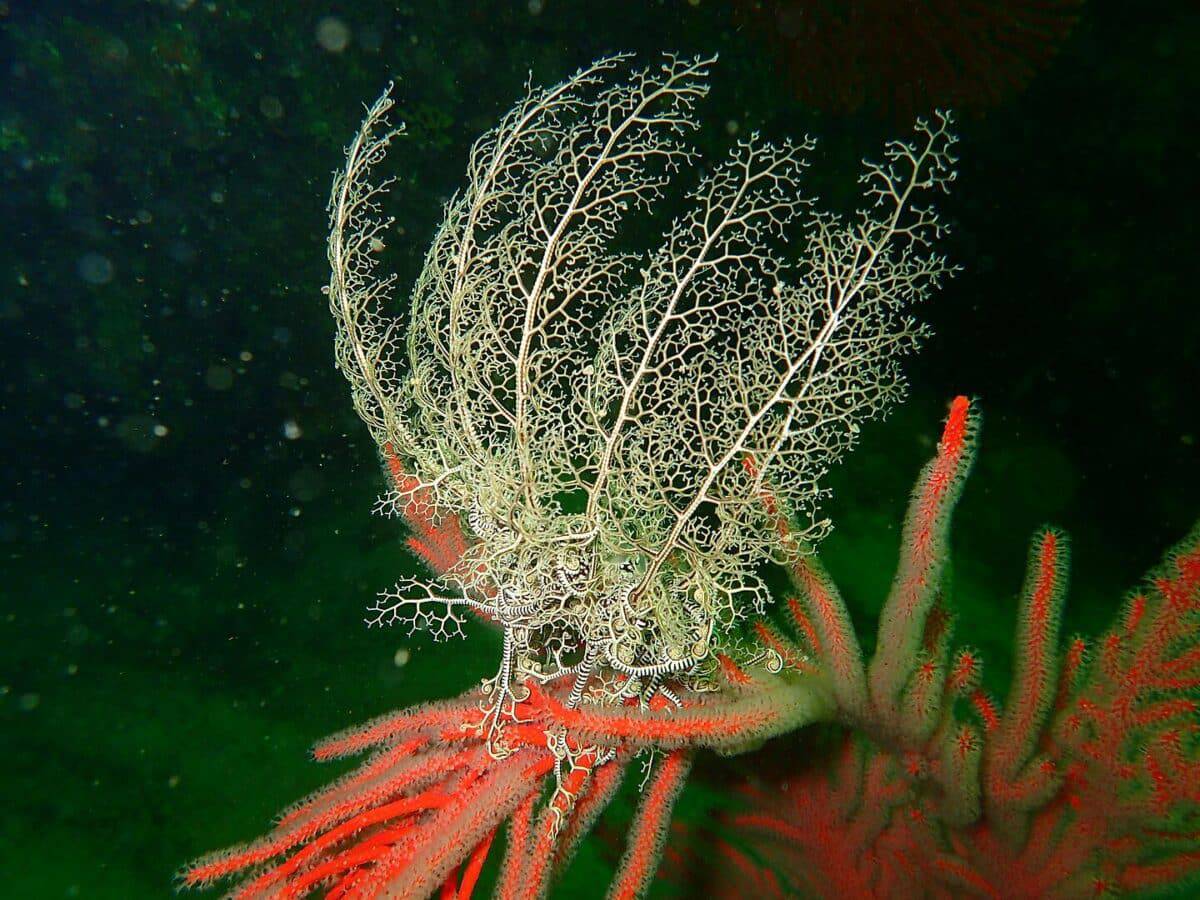The ocean spans over 70% of our planet, harboring an array of mystical creatures, some of which remain unknown to even the most seasoned marine biologist. While dolphins and sharks might steal the headlines, the ocean harbors myriad bewildering creatures that defy imagination. Join us as we delve into the mysterious depths to uncover 15 marine creatures you probably didn’t know existed.

 Dumbo Octopus. NOAA Okeanos Explorer, Public domain, via Wikimedia Commons.
Dumbo Octopus. NOAA Okeanos Explorer, Public domain, via Wikimedia Commons.Named after a beloved animated elephant, the Dumbo octopus (Grimpoteuthis) enchants with its ear-like fins that flap adorably like wings. Residing in the inky depths of the ocean, sometimes plunging as deep as 13,100 feet, these creatures are the deepest-dwelling of all known octopi. Despite their peculiar appearance, these creatures lead solitary lives, floating above the seabed and feeding primarily on worms and small crustaceans.


The leafy sea dragon (Phycodurus eques) resembles a piece of drifting seaweed, an ingenious adaptation that provides excellent camouflage against predators. Found along the southern and western coastlines of Australia, these slow-moving creatures are relatives of the seahorse. While they lack the body armor of their seahorse cousins, their leafy appendages offer them protection through disguise.


Though typically found in freshwater, the axolotl merits a mention due to its amphibious bonds with marine life. These curious creatures, native to the high-altitude lakes near Mexico City, have the unique capability to regenerate their limbs, spinal cord, heart, and other organs. Often dubbed the “Mexican walking fish,” axolotls continue to capture the fascination of scientists due to this regenerative capability.


Living in the deep, dark layers of the ocean, the viperfish (Chauliodus) is as menacing as its name suggests. With extremely long, fang-like teeth that are visible even when its mouth is closed, the viperfish uses its bioluminescent photophores to lure unsuspecting prey. Its flexible jaw and expandable stomach allow this fish to feast on prey for almost as long as itself.


The gulper eel (Eurypharynx pelecanoides) is known for its enormous mouth, resembling that of a pelican, hence its other name, the pelican eel. This creature inhabits depths where light is scarce. When needed, the gulper eel can stretch its jaws wide to swallow prey larger than its own body size. This unique feature becomes particularly important in the nutrient-scarce deep ocean environment.


The sea pen (order Pennatulacea) gets its name from its resemblance to an old-fashioned quill pen. These colonial marine cnidarians anchor themselves in soft substrates on the ocean floor, standing upright to better capture plankton with their feathery tentacles. Interestingly, some species exhibit bioluminescence, glowing when disturbed, contributing a gentle light to the otherwise dark ocean floor.


These vividly colored polychaete worms (Spirobranchus giganteus) are appropriately named Christmas tree worms for their branch-like appendages. These protrusions function primarily as external gills and feeding tools, filtering plankton from the water. Found in coral reefs around the world, these worms inhabit small burrows in corals, retreating swiftly at any sign of danger.


The mimic octopus (Thaumoctopus mimicus) is a master of disguise, capable of impersonating up to 15 different marine species—such as lionfish, flatfish, and sea snakes. By changing color and contorting its body, the mimic octopus can ward off predators or deceive prey. This skillful deception highlights its high level of intelligence and adaptability in the perilous marine world.


Despite its terrifying appearance, the fangtooth fish (Anoplogaster cornuta) is quite small and harmless to humans. This deep-sea dweller boasts some of the largest teeth compared to the body size of any fish, crucial for capturing prey in the darkness of its habitat. Resilient to the crushing pressures of the deep sea, these fish adapt with their incredible navigational and hunting skills.


The blue dragon (Glaucus atlanticus), a type of nudibranch, is a marvel of beauty and niche adaptation. Floating on the ocean’s surface, these slugs feed on venomous prey such as the Portuguese man o’ war, storing the venom in their tissues to ward off threats. The vibrant blue coloration provides camouflage against the sea and sky, while the silver undersides blend with the ocean surface below.


Famed for its unusual appearance, the goblin shark (Mitsukurina owstoni) belongs to an ancient lineage that dates back 125 million years. Equipped with a long, flat snout and protrusible jaws, it uses its sharp teeth to snatch prey from the depths. Dwelling at deep-sea levels, it emerges only occasionally in shallower waters, offering rare glimpses into a very old world of marine life.


A relative of the brittle star, the basket star (family Gorgonocephalidae) expands its intricate, branching arms into a net-like structure to ensnare plankton and small invertebrates. These echinoderms spiral and twist their arms to sweep food toward their mouths, demonstrating a remarkable adaptation to the food-sparse deep-sea environment.


Often referred to as a “living fossil,” the frilled shark (Chlamydoselachus anguineus) has barely changed over millions of years. With its eel-like body and wide mouth equipped with hundreds of needle-like teeth, this deep-sea predator is designed for ambushing its prey. The shark’s slow metabolism and thick, gelatinous body enable it to survive in the ocean’s cold and dark depths.


Discovered in Indonesian waters, the psychedelic frogfish (Histiophryne psychedelica) exhibits a mesmerizing pattern of vibrant stripes and blobs. Its flat face, large mouth, and illustrated skin allow these curious creatures to blend seamlessly into coral reefs. When disturbed, the frogfish excretes a cloud of toxins from its skin, warding off would-be predators.


The glass squid (Cranchiidae family), aptly named for its translucent body, prowls the mesopelagic layer of oceans worldwide. The delicate transparency helps avoid predators by mimicking the subtle refractions of light that pass through water layers. Equipped with bioluminescent organs, glass squids can also glow, confusing predators and prey alike.


Though the deep sea teems with life forms still beyond human comprehension, these fascinating creatures offer us a glimpse into the breathtaking diversity of oceanic life. From those disguising themselves amidst coral reefs to ancient predators prowling the shadowy depths, each unique creature enriches our understanding of the marine ecosystem—reminding us of the endless wonder that thrives beneath the waves.
Latest posts by Jan Otte (see all)
